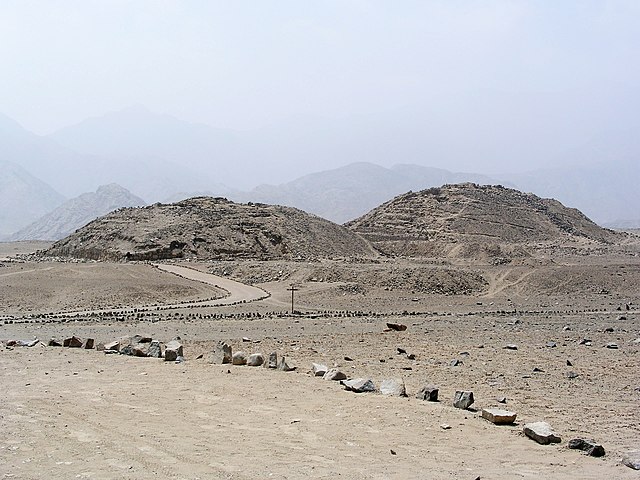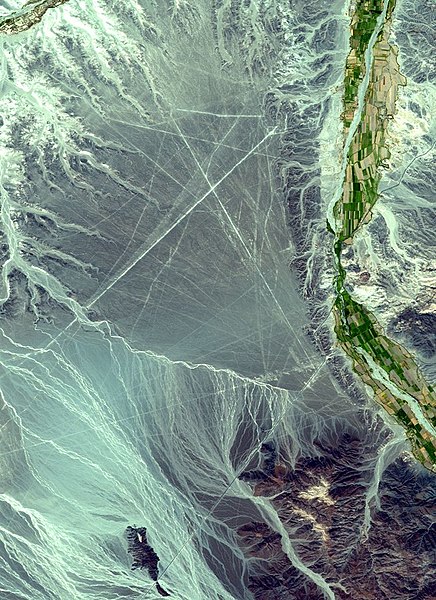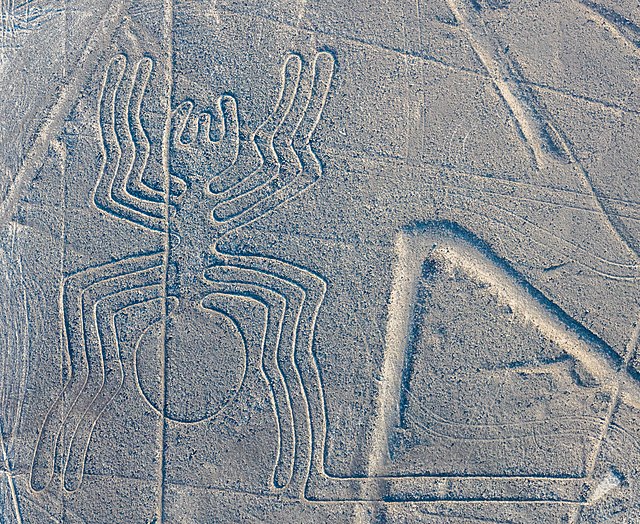The history of Peru spans 15 millennia, extending back through several stages of cultural development along the country's desert coastline and in the Andes mountains. Peru's coast was home to the Norte Chico civilization, the oldest civilization in the Americas and one of the six cradles of civilization in the world. When the Spanish arrived in the sixteenth century, Peru was the homeland of the highland Inca Empire, the largest and most advanced state in pre-Columbian America. After the conquest of the Incas, the Spanish Empire established a Viceroyalty with jurisdiction over most of its South American domains. Peru declared independence from Spain in 1821, but achieved independence only after the Battle of Ayacucho three years later.
Norte Chico Caral pyramids in the arid Supe Valley, some 20 kilometers from the Pacific coast.
Chavin gold crown from the formative epoch, 1200–300 BCE, in the (Larco Museum Collection), Nazca Lines, created by the Nazca culture.
The Moche culture is world-renowned for its pottery, pictured is a condor from about 300 CE.
Walls of Soloco fortress, Chachapoyas, Peru.
The Nazca lines are a group of geoglyphs made in the soil of the Nazca Desert in southern Peru. They were created between 500 BC and 500 AD by people making depressions or shallow incisions in the desert floor, removing pebbles and leaving different-colored dirt exposed. There are two major phases of the Nazca lines, Paracas phase, from 400 to 200 BC, and Nazca phase, from 200 BC to 500 AD. In the years leading up to 2020, between 80 and 100 new figures had been found with the use of drones, and archaeologists believe that there are more to be found.
Aerial photograph of one of the Nazca lines, taken in July 2015, that shows the design known as "The monkey"
Nazca Lines seen from SPOT Satellite
Satellite picture of an area containing lines: north is to the right (coordinates: 14°42′S 75°00′W / 14.7°S 75.°W / -14.7; -75.)
The Spider








